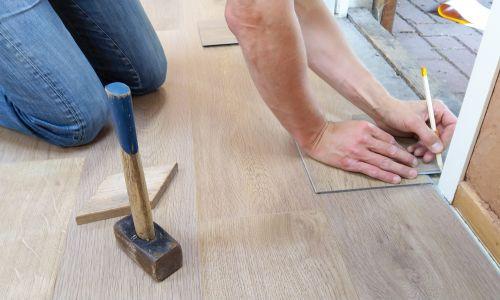Owners of co-ownership properties such as condominiums must ensure that they have sufficient funds not only to maintain their individuals but also to manage the common areas of the building. This is where the contingency fund comes into play; it was specifically created to help with the collective financial planning needed to maintain the property.
Since the Civil Code of Quebec came into effect in 1994, all condominium corporations in the province have been required to establish a contingency fund. The main goal of this legal requirement was to address the financial mismanagement that had plagued many condominium associations in the past, leaving unit owners with unexpected and burdensome costs.
Despite its introduction, the contingency fund was often underutilized for years. This was largely because many condominium associations failed to build up an adequate reserve, leaving them ill prepared to cover necessary expenses for building repairs and maintenance.
But what exactly is a contingency fund? What is it used for? And how much should unit owners should contribute? This article will provide you with the answers you need.

What is the contingency fund for divided co-ownership?
The creation of a contingency fund allows the syndicate to maintain the building in good condition. It is a monetary reserve intended to anticipate the finance maintenance that will be needed in the short, medium, or long-term for the common areas of the condominium. The fund accumulates money to cover the future costs of repairs and replacements, based on the expected lifespan of the building’s elements.
The funds available in the contingency reserve allow the syndicate to perform necessary maintenance of repairs without relying on the immediate financial situations of the condominium owners when urgent and costly renovations arise.
At the same time, the co-owners benefit from this reserve, as a sufficient contingency fund helps avoid the need for a special assessment, which could place a financial burden on residents. By planning for these future expenses, the required amounts can be spread out over time through regular monthly payments, reducing the impact on each co-owner's finances.
What is the purpose of the contingency fund?
As mentioned, the purpose of the contingency fund is to finance work on the building that may be required in the short, medium, or long-term.
However, the fund is not meant to cover all renovation projects, but rather major repairs or the replacement of common areas within the condominium. Therefore, the board must clearly define the following terms:
- What are the common spaces?
- What qualifies as a major repair?

What are the common areas?
To identify the relevant areas, the board of directors must consult the declaration of co-ownership, which outlines the common areas of the buildings, as well as the cadastral plan, which provides the boundaries and measurements of each lot.
Any vague or incomplete identification of common areas could lead to confusion when determining whether a proposed project qualified for funding from the contingency fund. Therefore, it is crucial for the common areas to be defined as clearly and precisely as possible to avoid ambiguity.
What qualify as major repair?
According to Article 1152 of the Civil Code of Quebec, major repairs are defined as ‘’repairs that affect a significant part of the property and require an exceptional expenditure.’ Examples of major repairs include:
- Beams
- Load-bearing walls
- The roof
- The building envelope
- Heating, electrical, or plumbing systems
- Other significant structural or system-related repairs.
The syndicate can use this definition, along with these examples, to help clarify which types of work can be funded through the contingency fund.
When should it be used?
The contingency fund is specifically intended to cover exceptional expenses related to major repairs and replacement of common areas.
It cannot be used to pay for:
- Minor repairs.
- Improvement work.
- Ongoing maintenance costs.
- Covering a deficit.
- Paying fees.
- Any non-repair-related expenses.

How is the contingency fund established?
According to Article 1071 of the Civil Code of Quebec, the contingency fund must be established based on the estimated cost of major repairs and the cost of replacing common areas. These costs must be carefully evaluated to determine the appropriate amount to be accumulated in the fund.
The required amount must then be raised by the syndicate, which has a legal obligation to establish and maintain the fund. This is not optional.
Once the funds are collected, they become the property of the syndicate. If a unit owner decides to sell their unit, the money they have paid into the contingency fund is not refundable.
The amounts accumulated in the fund must be deposited in a financial institution. Regardless of the syndicate’s investment strategy, a portion of the funds must remain liquid and available for use within 30 days.
If the accumulated funds are insufficient to cover the necessary major renovations, the board may call for a special assessment. However, before making this decision, the general meeting of unit owners must be consulted.

How much do the unit owners typially contribute?
Each co-owner's contribution to the contingency fund is determined by the relative value of their share in the property. This means that the contributions are proportional to the size or value of the co-owner's unit compared to the entire condominium. The contributions are typically paid monthly, alongside other condominium fees.
The Civil Code of Quebec specified that the contributions to the contingency fund should be at least 5% of the total contribution to the common expenses. However, this 5% is merely a guideline and not a strict requirement.
Experts have pointed out that the minimum if often insufficient, especially when considering the cost of repairs and replacement of common elements. As a result, many syndicates have historically adhered to this minimum, even though it may not provide adequate funds for future needs.
To address this issue, the law has been updated. Now, the amounts to be contributed to the contingency fund must be based on a contingency fund study, which will assess the property’s long-term needs and recommend an appropriate contribution amount.
This study will help determine a more realistic contribution amount, the current state of the property and the money already available in the contingency fund. This approach ensures that the fund is adequately prepared to cover future major repairs and replacements.
The role of the Board of Directors in setting condominium fees
The Board of Directors is the primary governing body of the syndicate, holding executive and decision-making authority. Its main responsibilities include the maintenance of the building and the preparation of the condominium’s preliminary budget. The board determined the amount to be paid by the unit owners, including the contributions to the contingency fund.
In addition to calculating the required contributions, the board must ensure that the contingency fund is properly managed and used solely for its intended purpose.

The contingency fund study (Bill 16)
In response to the realization that a 5% contribution to common expenses is often insufficient to meet a condominium’s actual financial needs, the Quebec government introduced Bill 16, which mandates the conduct of a contingency fund study.
This study, required to be carried out every 5 years, is designed to help syndicates plan for future expenses, ensuring that major repairs or replacements do not catch co-owners by surprise. The study has both physical and financial components:
-
A thorough inspection of the building’s major components to evaluate their condition and estimate their remaining lifespan.
-
Determining which repairs or replacements are most urgent.
-
Estimating the cost of the necessary repairs or replacements for the common areas.
-
Analysis the contributions needed from co-owners to fund the repairs.
The contingency fund study is not only crucial for ensuring the building’s upkeep but also for creating a comprehensive financial plan to address both short-term and long-term needs.
Who can perform a contingency fund study?
The contingency fund study must be conducted by an authorized professional who has the necessary expertise in building condition assessments and financial planning for property maintenance, such as:
- An engineer
- An architect
- A professional technologist

Contingency, administration and self-insurance funds: what's the difference?
There are several types of condominium fees, and it’s important to understand the differences between the funds to which a condominium must contribute. Each fund serves a specific purpose:
- The administrative fund: this fund is used to cover the daily expenses of managing the building, such as maintenance and administrative tasks.
- The contingency fund: this fund is intended to pay for major repairs and replacements of common areas and building components.
- The self-insurance fund: this fund helps to pay the deductible following a claim, covering the amount the condominium must pay out of pocket before the insurance coverage applies.
The maintenance log
Under Law 16, the maintenance log of a co-ownership serves as a detailed record of the building’s history, essentially acting as the CV of the co-ownership. It tracks all operations performed on the building, as well as upcoming renovations, making it an invaluable tool for professionals reviewing the contingency fund.
The maintenance log must include the following information:
- History of the construction site.
- Year of construction.
- Date of receipt of the common areas.
- List of the building’s common area, including surface area and volume.
- Major work completed, detailing:
- Companies that performed the work
- Plans, specifications, and warranties related to the work.
- Technical description of the building, including:
- Architectural and engineering plans
- Cadastral plan
- Technical studies
- Any granted exemptions (if applicable)
- Maintenance manuals, systems, and components of the building.
- Maintenance and follow-up strategy.
Although not yet a legal requirement, maintaining a maintenance log is strongly recommended. Co-ownership administrators who maintain a log demonstrate responsible management and good governance, which is valuable for both future owners and current occupants.
Looking to become a condo owner?
XpertSource.com can help you find a real estate broker. When you tell us about your project, we put you in touch with qualified resources for free. Simply fill out our form (it only takes a few minutes) and we will connect you with professionals.





